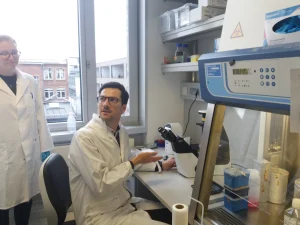
Exploring Cutting-Edge Biological Signalling Research in Freiburg
The Lord Mayor of Freiburg, Martin Horn, recently embarked on a visit to the renowned Signalhaus Freiburg, a symbol of research excellence housing the Clusters

The Lord Mayor of Freiburg, Martin Horn, recently embarked on a visit to the renowned Signalhaus Freiburg, a symbol of research excellence housing the Clusters
The research unit “UcarE – Urothelial Carcinoma Epigenetics” aims to investigate the biological mechanisms that underlie bladder cancer. The unit’s spokesman is Prof Dr Ian

In June, the two Freiburg signalling research centres CIBSS and BIOSS gave visitors insights into current research topics.
Glowing molecules and the memories of plants:
